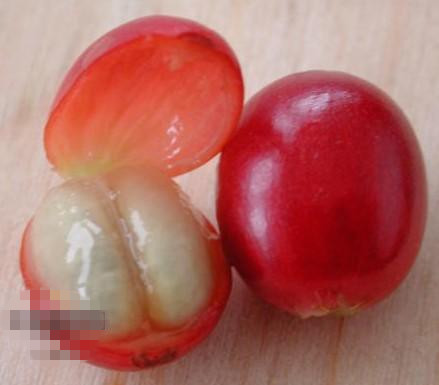Secret Book of Coffee Bean processing
After the fruit is harvested, the outer skin, pulp, endocarp and silver skin should be removed before shipping. There are two kinds of methods: drying (also known as natural or non-washing) and washing.

The drying method is relatively simple. First of all, spread the freshly harvested fruit on the exposure field for a week or two until the fruit crackles and dries naturally. After that, the dried pulp, endocarp and silver peel are removed by a sheller. Coffee beans refined in this way are slightly sour and slightly bitter. Almost all coffee beans produced in Brazil, Ethiopia, Yemen and other places are obtained in this way. The disadvantage of this method is that it is easily affected by weather and is easy to be mixed with defective beans and other impurities. Therefore, teachers must be carefully selected.
Another way is to wash the fruit, in which the fruit to be harvested is put into a flowing trough. After the floating fruit is removed, the skin and flesh are removed by a pulp remover. Then put it in the sink to remove the emerging pulp. After that, move into the fermentation tank, soak for half a day to a day, and then dissolve the gum on the surface of the fermented coffee beans. After washing with water, drying it for a few days, drying it with a machine, and finally using a sheller to remove the endocarp to become a commercial raw coffee bean.
Water-washed coffee beans are more beautiful in color and less impurity than those obtained by drying. Colombia, Mexico, Guatamara and other countries adopt this method for about 70% of their output. Sometimes in the fermentation process, if not handled properly, it may give off fermentation odor and its unique sour taste, but if handled properly, all kinds of beans can give off their unique coffee aroma. In order to be delivered completely to the destination, raw coffee beans are packed in sacks and placed in special containers for long-distance merchant shipping trips.
Important Notice :
前街咖啡 FrontStreet Coffee has moved to new addredd:
FrontStreet Coffee Address: 315,Donghua East Road,GuangZhou
Tel:020 38364473
- Prev

Some information about the blending of coffee beans
What is mixed coffee? The basics of coffee blending, people need to put together coffee from different places for several different purposes. The ideal goal, of course, is to piece together a coffee that tastes better than any of them.
- Next

The knack of distinguishing the freshness of coffee beans
Good coffee beans, neat shape, bright color, roasted by single stir-fry. After brewing, the flavor is mellow and the stamina is strong; the bad coffee beans are of different shapes and incomplete. It is not mellow enough to talk about fragrance after brewing.
Related
- Guji coffee producing area of Guji, Ethiopia: Humbela, Shakiso, Wulaga
- What is the most expensive variety of Qiloso in BOP multi-variety group?
- How to store the coffee beans bought home?
- Why are Yemeni coffee beans so rare now?
- Ethiopian Sidamo all Red Fruit Sun Sun Santa Vini Coffee beans
- SOE is mostly sour? What does it mean? Is it a single bean? what's the difference between it and Italian blending?
- Is Italian coffee beans suitable for making hand-brewed coffee?
- How to choose coffee beans when making cold coffee? What kind of coffee beans are suitable for making cold coffee?
- Just entered the pit to make coffee, what kind of coffee beans should be chosen?
- Can only Japan buy real Blue Mountain Coffee? What are authentic Jamaican Blue Mountain coffee beans?

